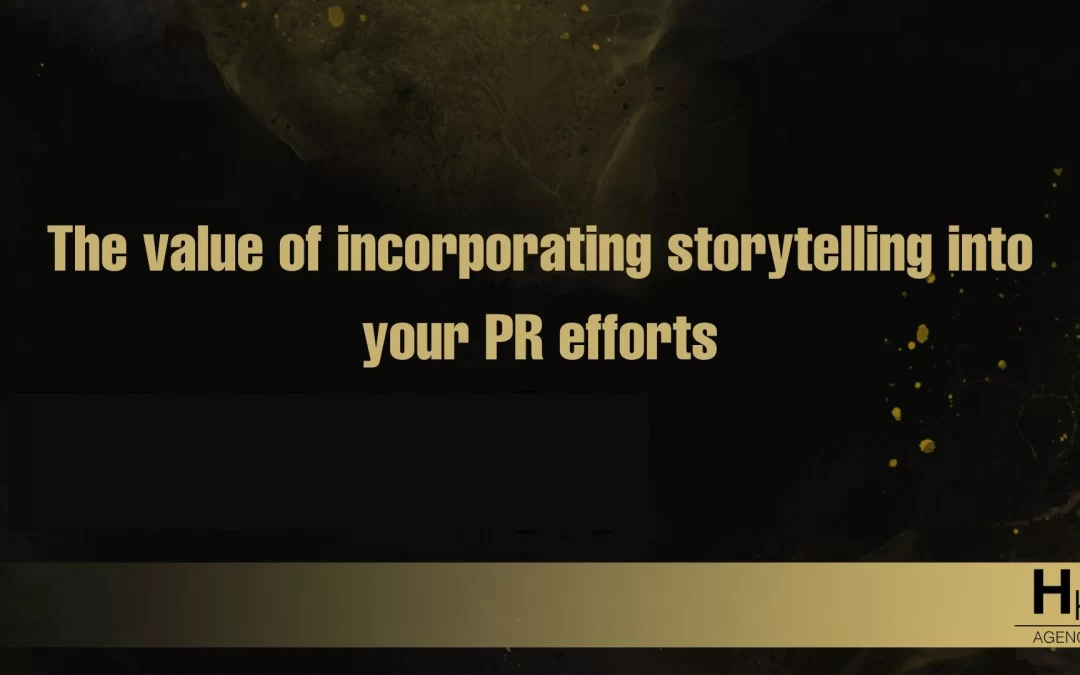As a public relations agency, HighKey Agency knows the importance of effective communication and engaging storytelling in our work. Whether we’re working on a press release, a social media campaign, or a crisis management plan, we understand the value of incorporating storytelling into our PR efforts.
But what is storytelling, and why is it so important in PR? Here’s what you need to know:
- Storytelling is the art of using words, images, and other media to create and share a narrative. This narrative can be based on real events or experiences, or it can be fictional, but the goal is always to engage the audience and create a connection.
- Storytelling is important in PR because it helps to create and maintain relationships with key stakeholders. This can include the media, customers, employees, investors, and other groups that are important to the success of your business or organization. By using storytelling, you can build trust and credibility, and create a sense of community and connection.
- Storytelling is also important in PR because it helps to create and share a consistent and compelling brand narrative. This narrative can help to define your brand and can be used to shape the way your business or organization is perceived by others. By using storytelling, you can create a clear and compelling brand story that will differentiate you from your competitors and help you connect with your target audience.
- Storytelling is a valuable tool in crisis management. When faced with a crisis, it’s important to communicate clearly and effectively with the media and other stakeholders. By using storytelling, you can help to control the narrative and provide context and meaning to the events that are unfolding. This can help to protect your brand and reputation and can prevent the crisis from escalating further.
If you want to incorporate storytelling into your PR efforts, here are a few tips to help you get started:
- Identify the stories that are relevant and compelling to your audience. Before you start telling stories, take some time to think about the stories that will be most interesting and engaging to your audience. This could include stories about your business or organization, your products or services, your customers or employees, or other aspects of your brand.
- Use a variety of storytelling formats and channels. There are many different ways to tell stories, and different formats and channels may be more effective for different audiences and purposes. For example, you can use social media posts, videos, podcasts, or blog posts to share your stories, and you can use different styles, such as narrative, persuasive, or informative, depending on your goals and objectives.
- Make your stories authentic and relatable. To engage your audience, it’s important to make your stories authentic and relatable. Avoid using overly formal or corporate language, and try to use storytelling to showcase the human side of your brand. This can help to build trust and credibility and can create a stronger emotional connection with your audience.
- Involve your employees and stakeholders in the storytelling process. Your employees and stakeholders can be valuable sources of stories and insights, and involving them in the storytelling process can help to create a sense of ownership and engagement. Consider holding workshops or training sessions to help employees and stakeholders understand the importance of storytelling and how to use it effectively.
In conclusion, incorporating storytelling into your PR efforts can be a valuable way to engage your audience, build relationships, and enhance your brand. By following these tips and working with a PR firm like HighKey Agency, you can develop a storytelling strategy that will support your goals and objectives, and help you connect with your audience in a meaningful and authentic way.

